Intel unleashes 14th Gen Raptor Lake Refresh HX-series CPUs — refreshed chips with up to 24 cores, 5.8 GHz boost clock, and 192GB DDR5 support

Intel has announced the company's 14th Generation Raptor Lake Refresh HX-series mobile processors at CES 2024 in Las Vegas, Nevada. Spearheaded by the Core i9-14900HX, which wields 24 cores, the new HX-series chips cater to gamers, enthusiasts, content creators, and professionals that need high performance on the go.
Raptor Lake Refresh, which is produced on the Intel 7 node, hasn't change much in terms of design. Like the previous generation, Raptor Lake Refresh continues to exploit a hybrid design, which consists of performant Raptor Cove P-cores and and weaker Gracemont E-cores. While the core count has remained stagnant on the Core i9 and Core i5 SKUs, Intel has bolstered the E-cores along with the L3 cache on the Core i7 models. Intel has revealed five HX-series overclockable SKUs.
The Core i9-14900HX leads Intel's 14th Generation HX-series army. The 24-core, 32-thread processor has a 400 MHz and 200 MHz higher P-core and E-core boost clock, respectively, than the exiting Core i9-13900HX. The Core i7-14700HX and Core i7-14650HX, however, are the only two SKUs to receive a small core increase.
Intel has added four additional E-cores to the Core i7-14700HX, pushing the total number of cores to 20 as opposed to the Core i7-13700HX's 16 cores. The chipmaker also took the opportunity to increase the boost clock speeds on the Core i7-14700HX. The processor's P-cores and E-cores boost up to 500 MHz and 200 MHz higher than the Core i7-13700HX while retaining the same 55W PBP (Processor Base Power) and 157W MTP (Maximum Turbo Power). There's 3MB more L3 cache on the Core i7-14700HX than its predecessor.
Intel 14th Generation Raptor Lake Refresh HX-series CPU Specifications
| Processor | Processor Cores (P+E) | Processor Threads | Intel Smart Cache (LLC) | Max Turbo Frequency P-cores | Max Turbo Frequency E-cores | Base Frequency P-cores | Base Frequency E-cores | Processor Graphics | Max Memory Speed | Memory Capacity | Processor Base Power (W) | Max Turbo Power (W) |
|---|---|---|---|---|---|---|---|---|---|---|---|---|
| Core i9-14900HX | 24 (8+16) | 32 | 36MB | Up to 5.8 | Up to 4.1 | Up to 2.2 | Up to 1.6 | Intel UHD Graphics | DDR5-5600, DDR4-3200 | 192GB | 55 | 157 |
| Core i7-14700HX | 20 (8+12) | 28 | 33MB | Up to 5.5 | Up to 3.9 | Up to 2.1 | Up to 1.5 | Intel UHD Graphics | DDR5-5600, DDR4-3200 | 192GB | 55 | 157 |
| Core i7-14650HX | 16 (8+8) | 24 | 30MB | Up to 5.2 | Up to 3.7 | Up to 2.2 | Up to 1.6 | Intel UHD Graphics | DDR5-5600, DDR4-3200 | 192GB | 55 | 157 |
| Core i5-14500HX | 14 (6+8) | 20 | 24MB | Up to 4.9 | Up to 3.5 | Up to 2.6 | Up to 1.9 | Intel UHD Graphics | DDR5-5600, DDR4-3200 | 192GB | 55 | 157 |
| Core i5-14450HX | 10 (6+4) | 16 | 20MB | Up to 4.8 | Up to 3.5 | Up to 2.4 | Up to 1.8 | Intel UHD Graphics | DDR5-5600, DDR4-3200 | 192GB | 55 | 157 |
The Core i7-14650HX, on the other hand, didn't receive more E-cores but instead obtained two P-cores. As a result, the chip now has a total of 16 cores, consisting of eight P-cores and eight E-cores. It's a noticeable jump up from the Core i7-13650HX's 14 cores, which features a six P-core and eight E-core design. Due to the increment of two P-cores, Intel couldn't give the Core i7-14650HX a big speed bump. In comparison to the Core i7-13650HX, the Core i7-14650HX only has a 300 MHz and 100 MHz higher P-core and E-core boost clock speed in order to maintain the same power envelope.
The Core i5 models had the smallest improvements out of the lot. The Core i5-14500HX boasts a 200 MHz higher P-core boost clock than the Core i5-13500HX, while preserving the same E-core boost clock. Meanwhile, the Core i5-14450HX's P-core and E-core boost clocks are only 200 MHz and 100 MHz better than the Core i5-13450HX.
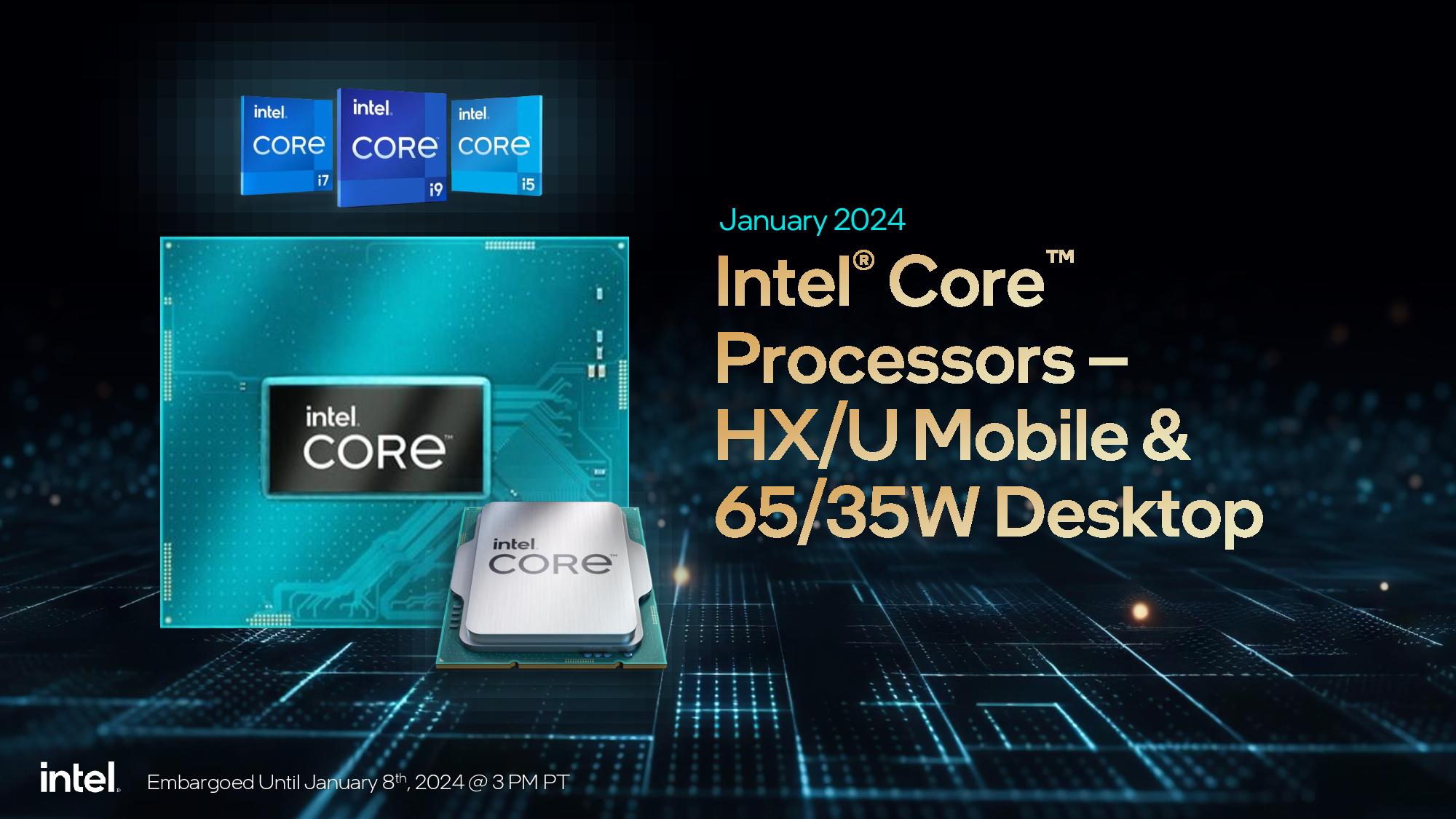
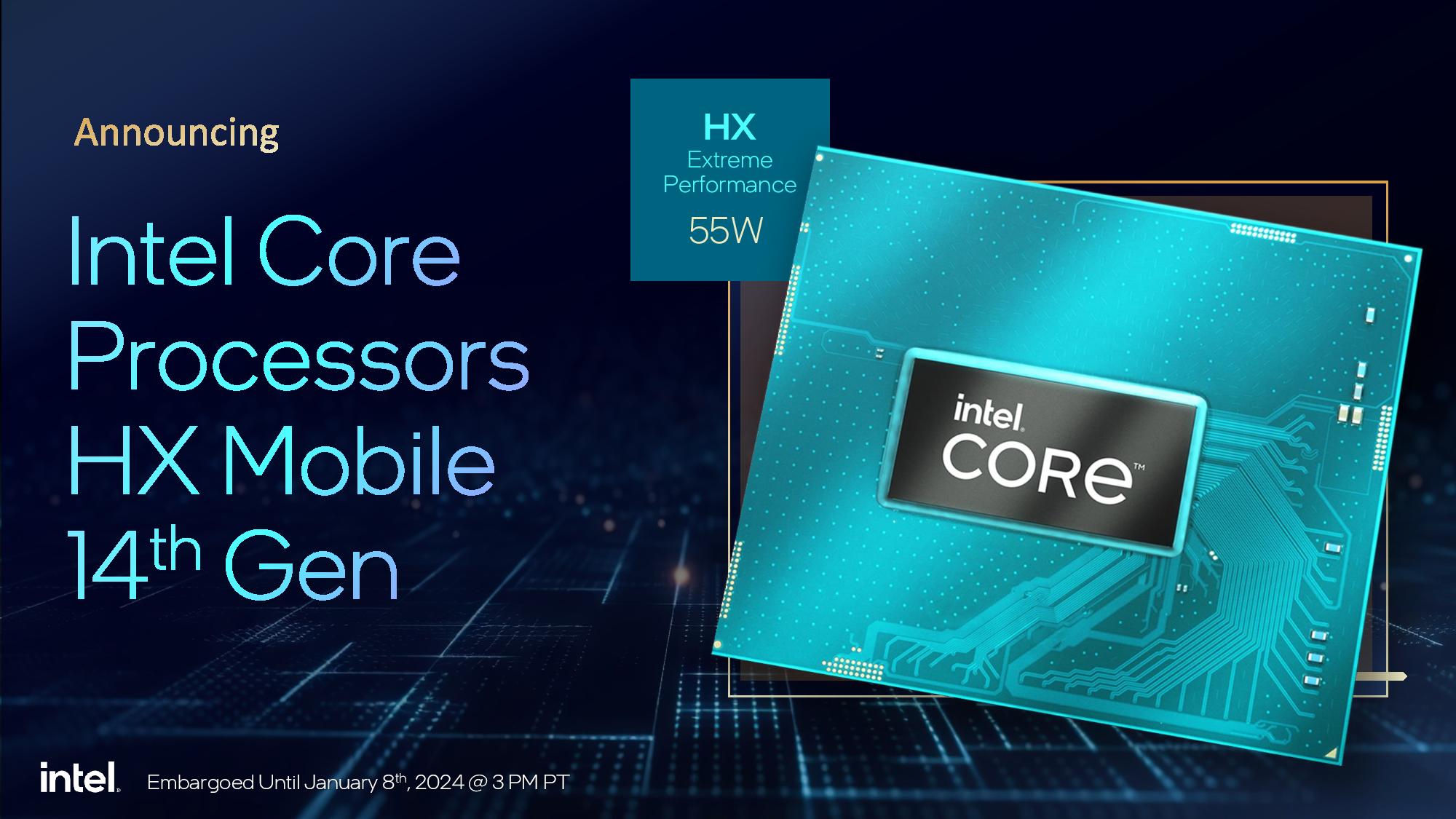
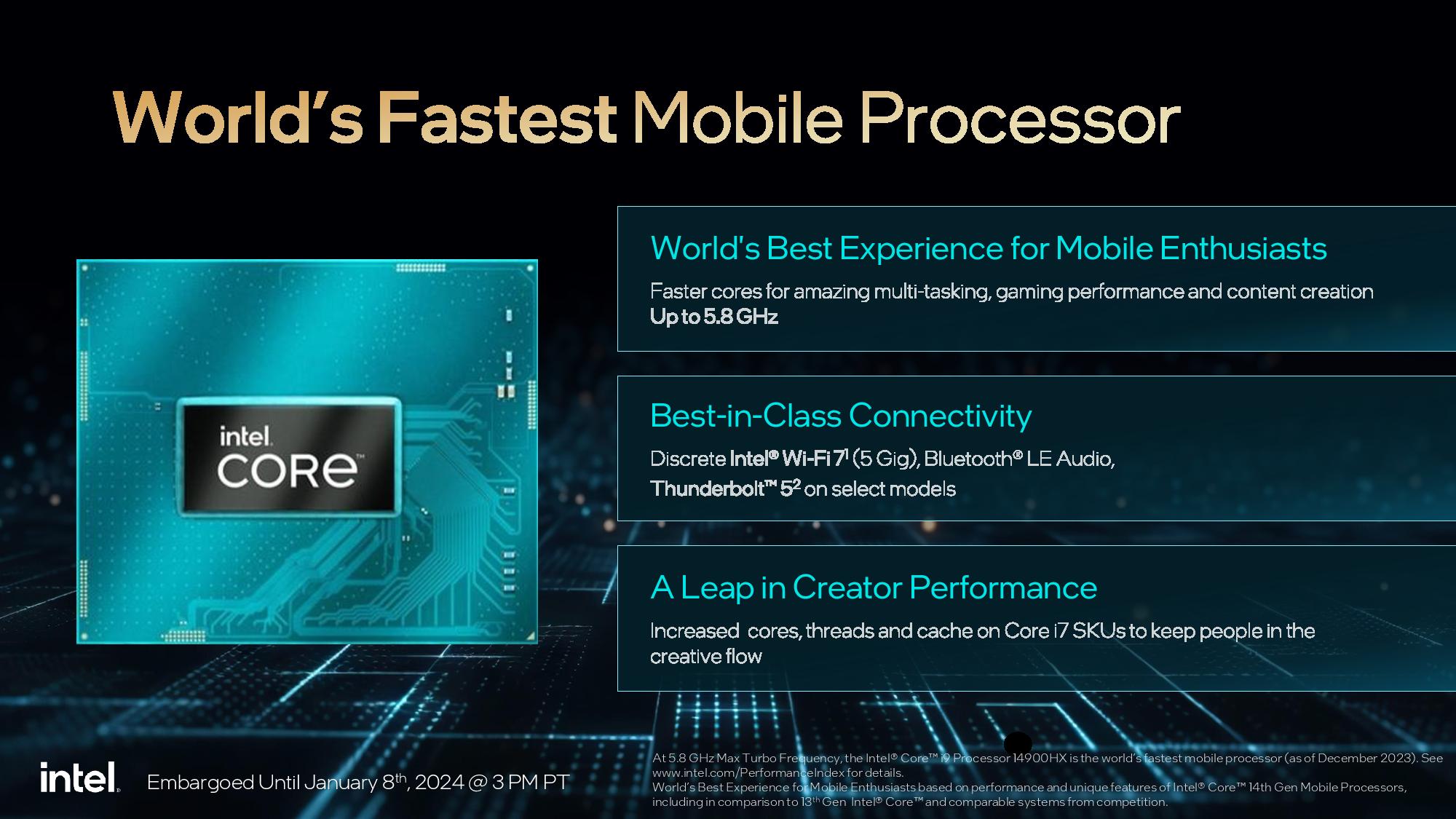

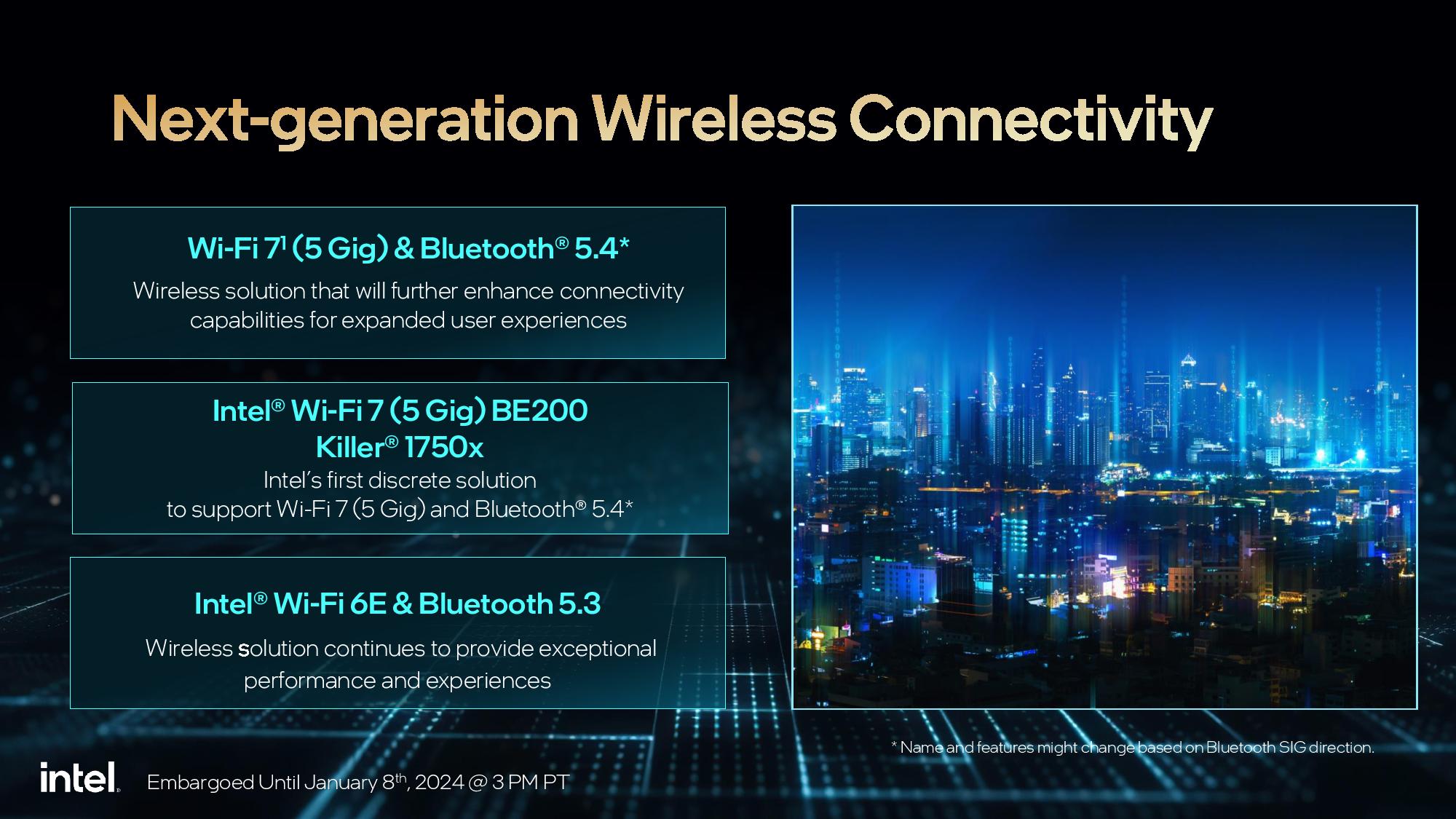

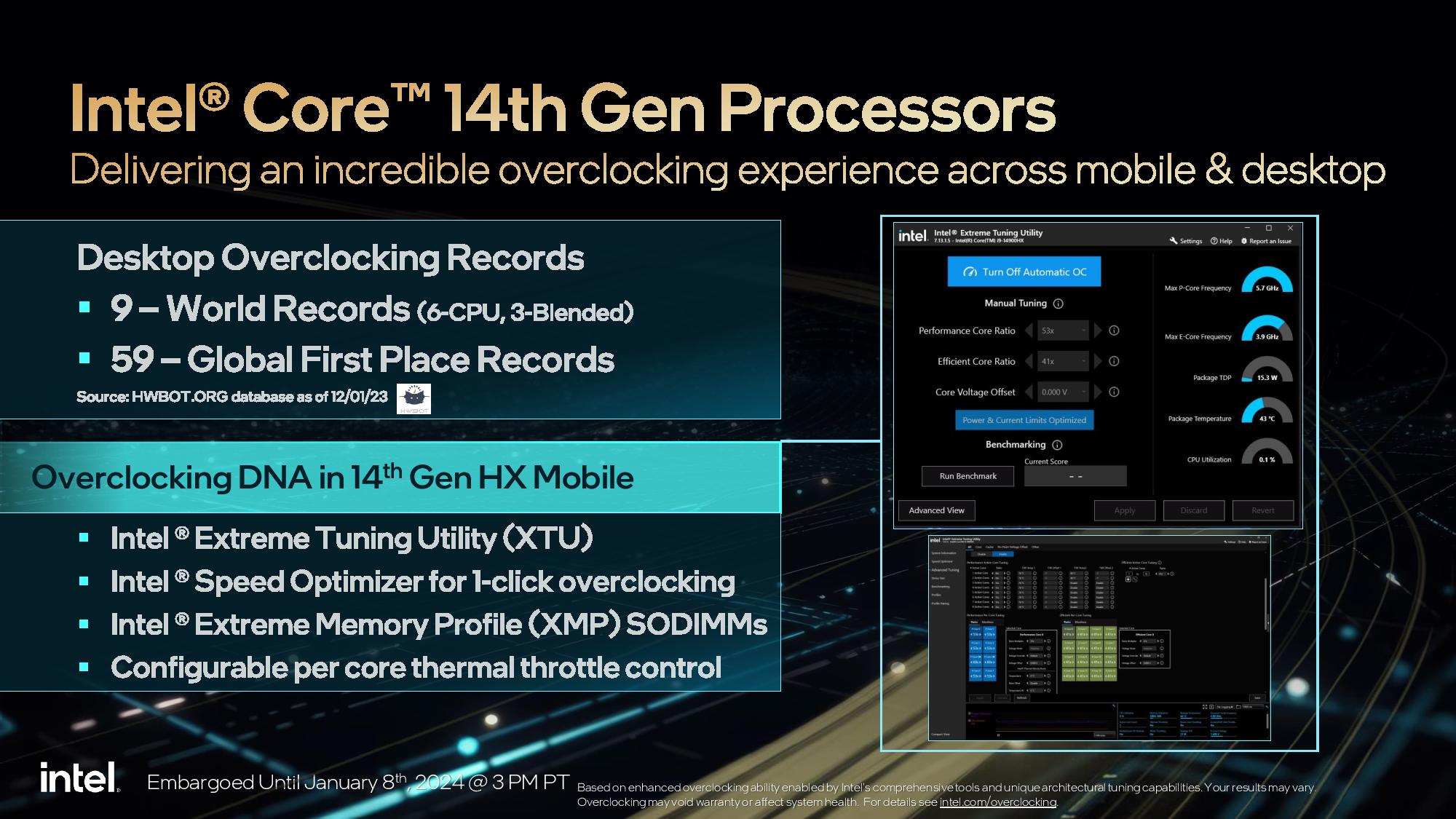
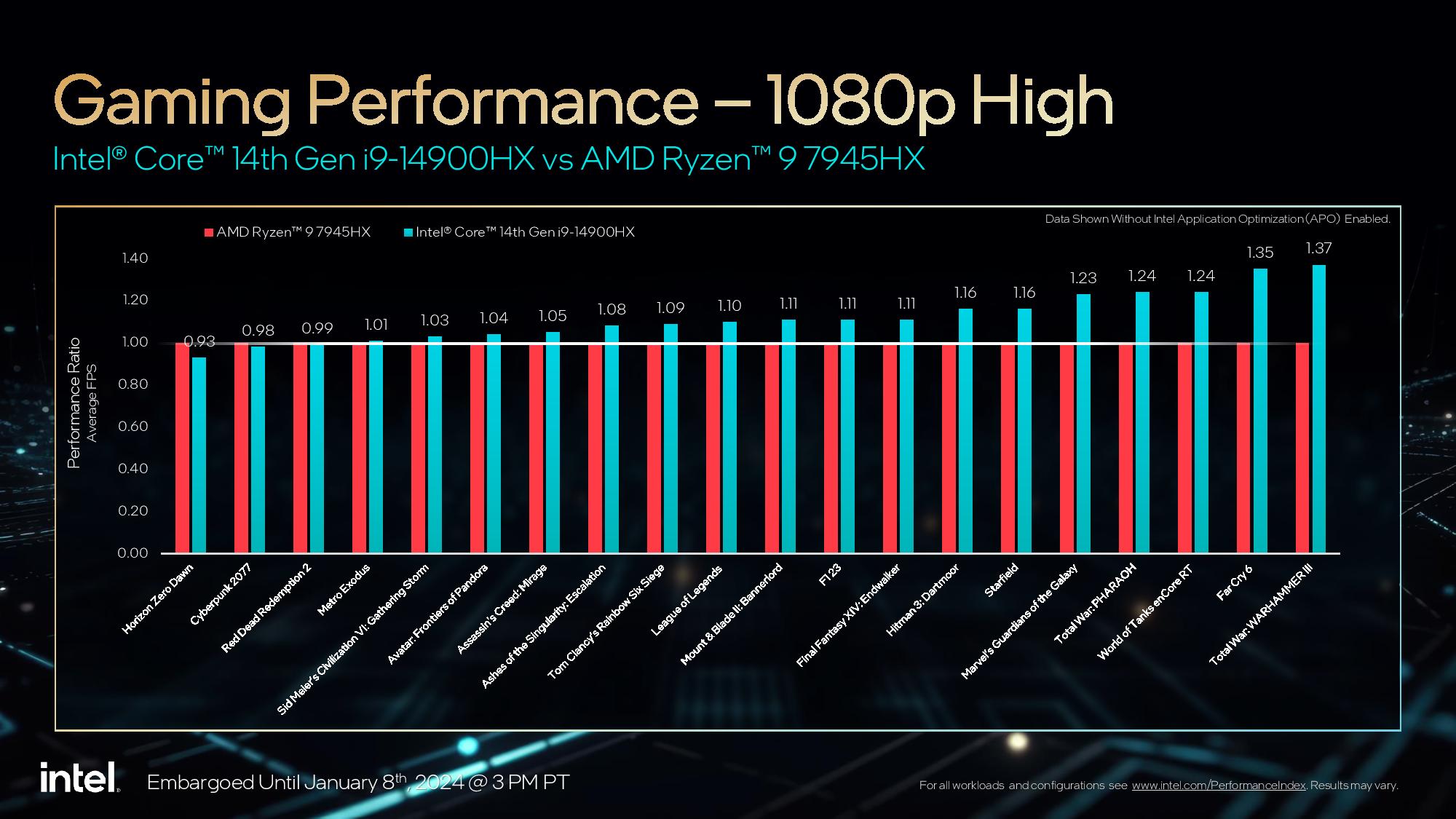
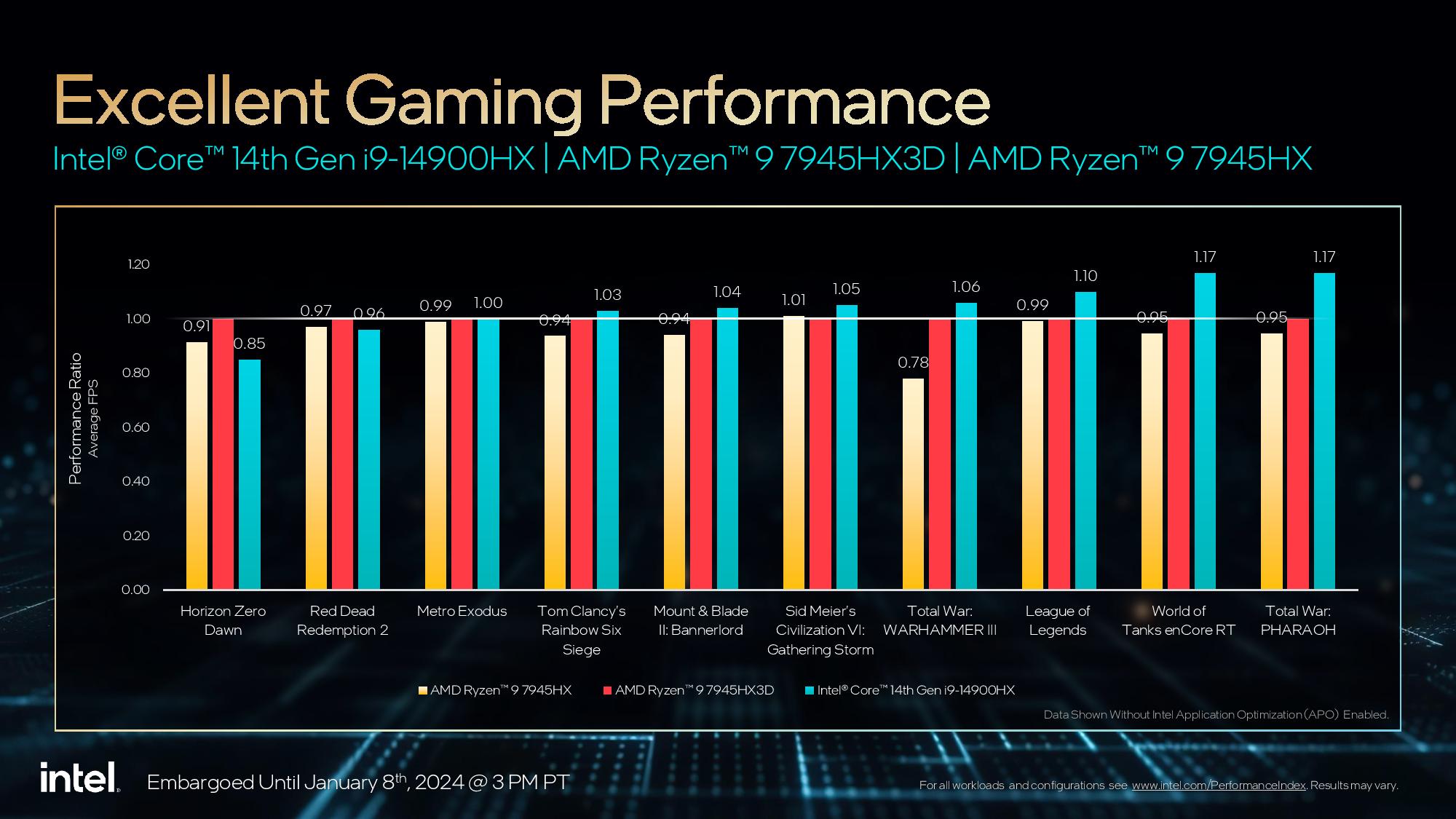
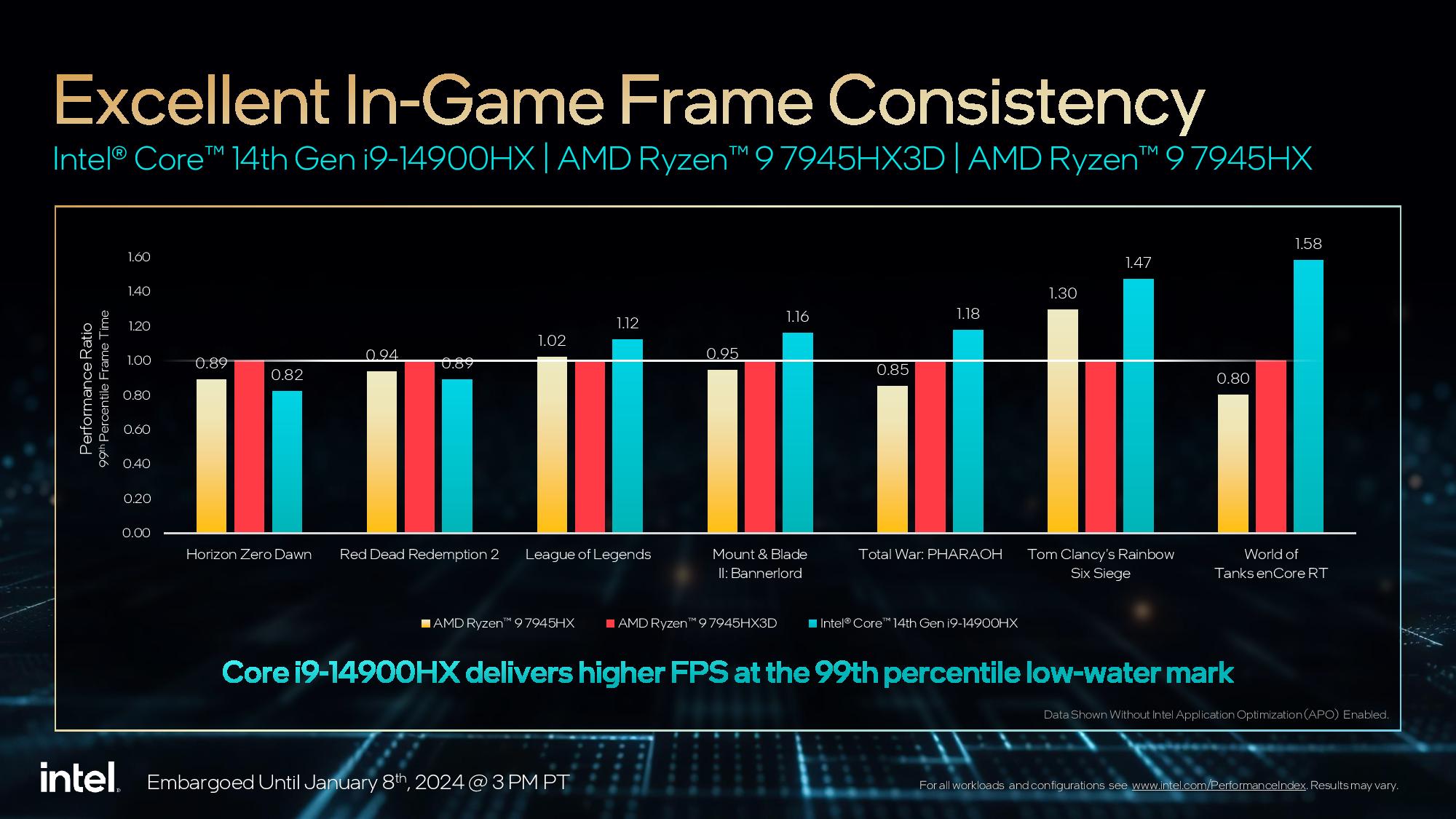
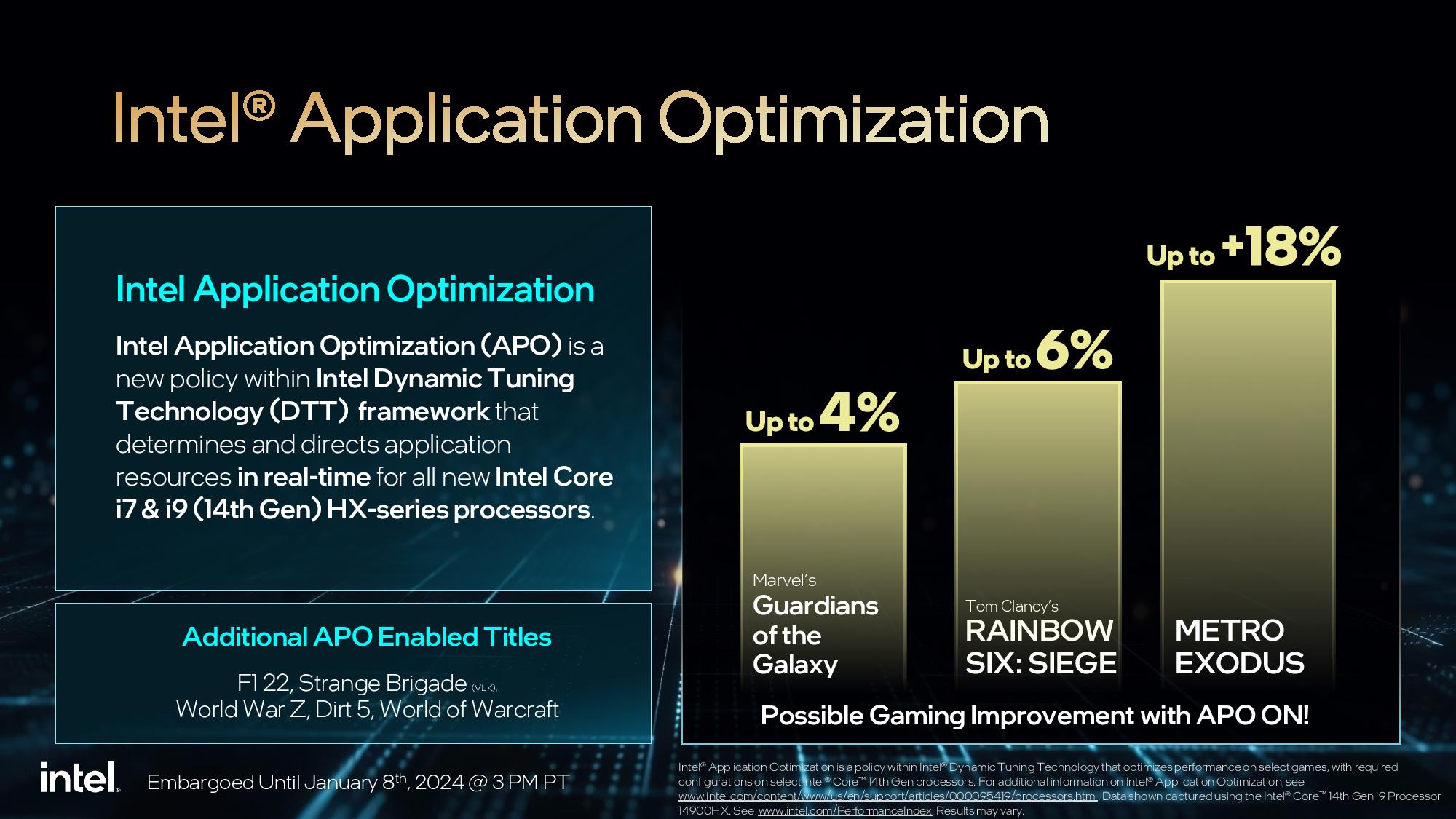
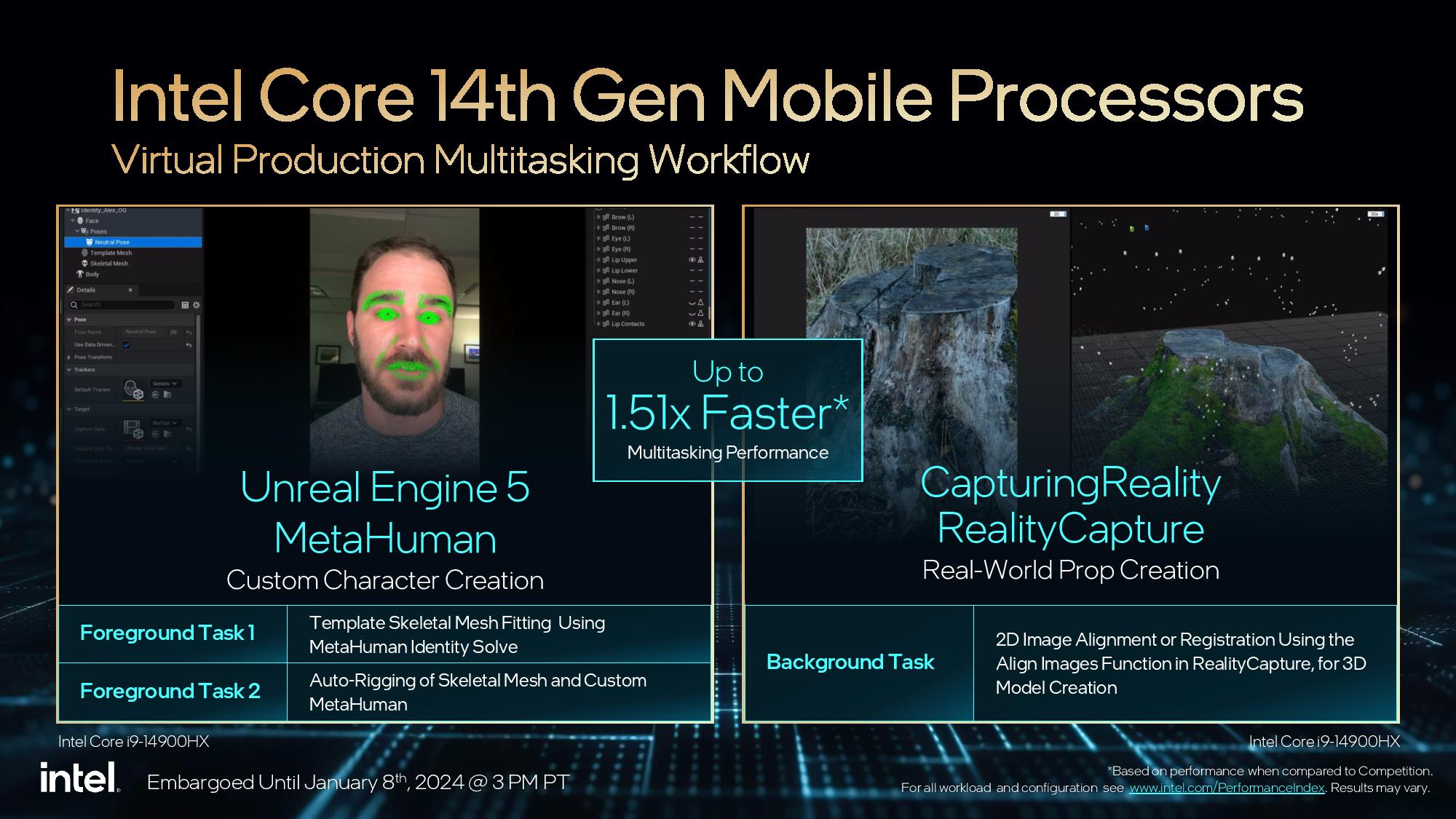
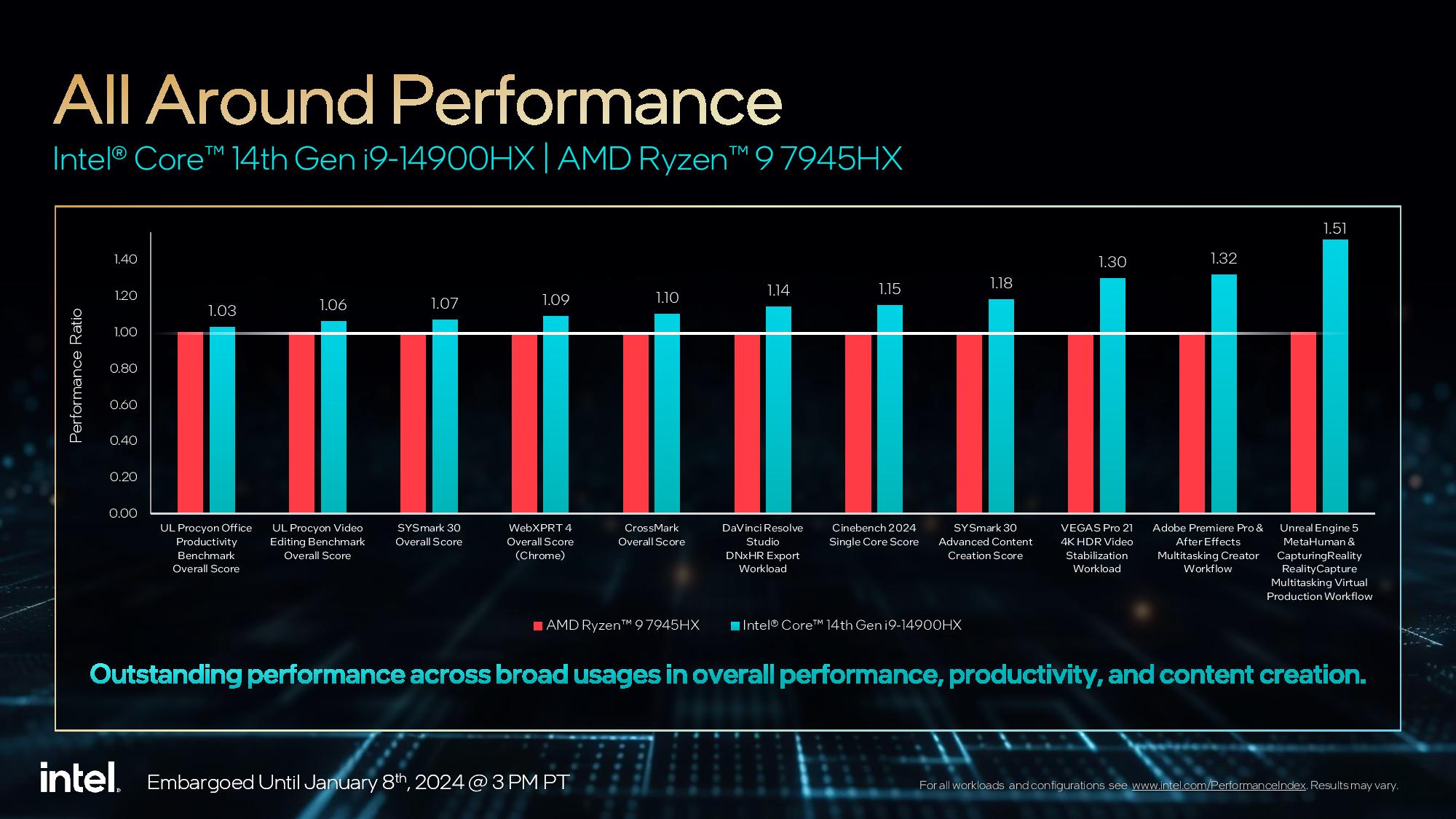
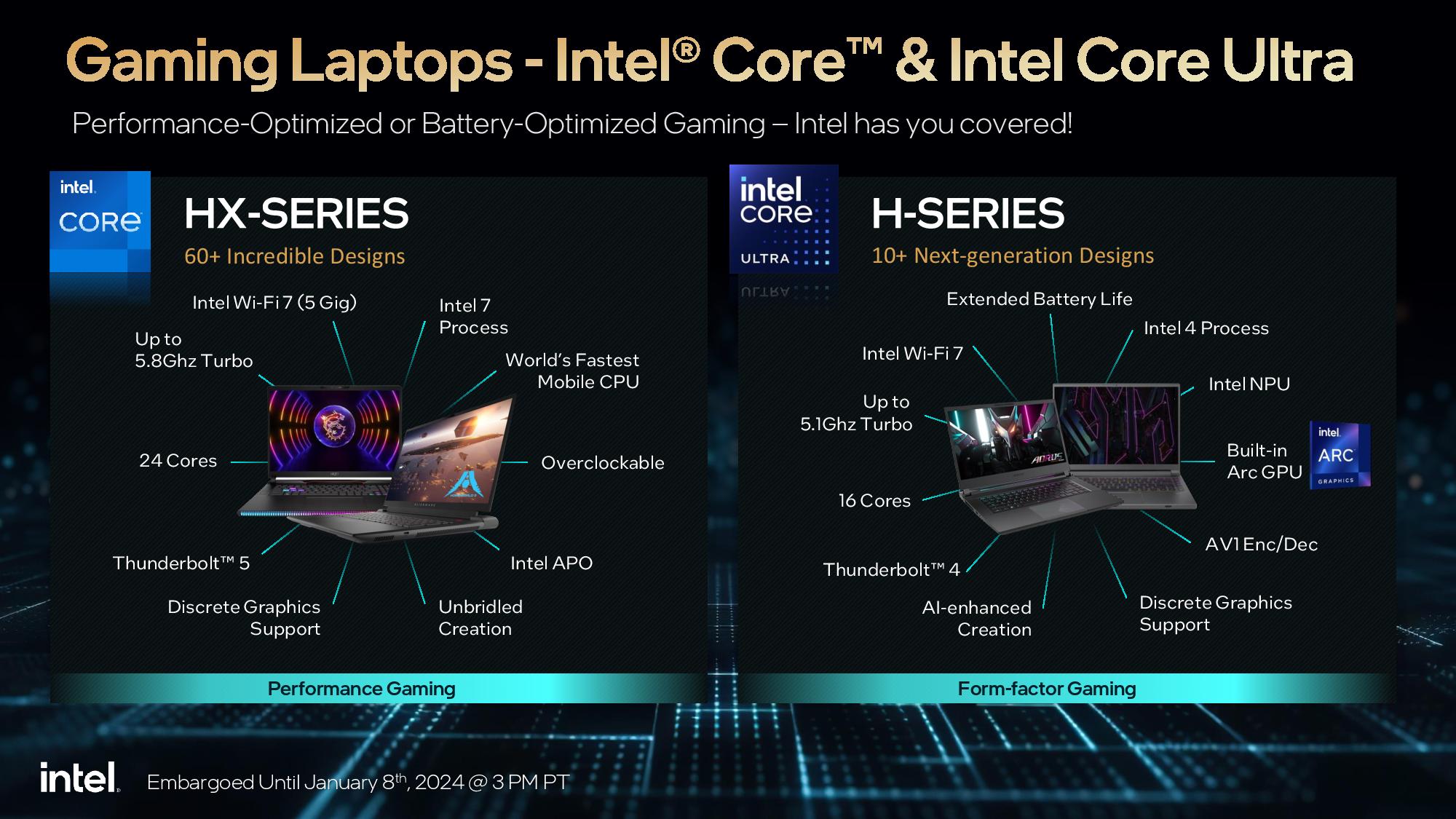
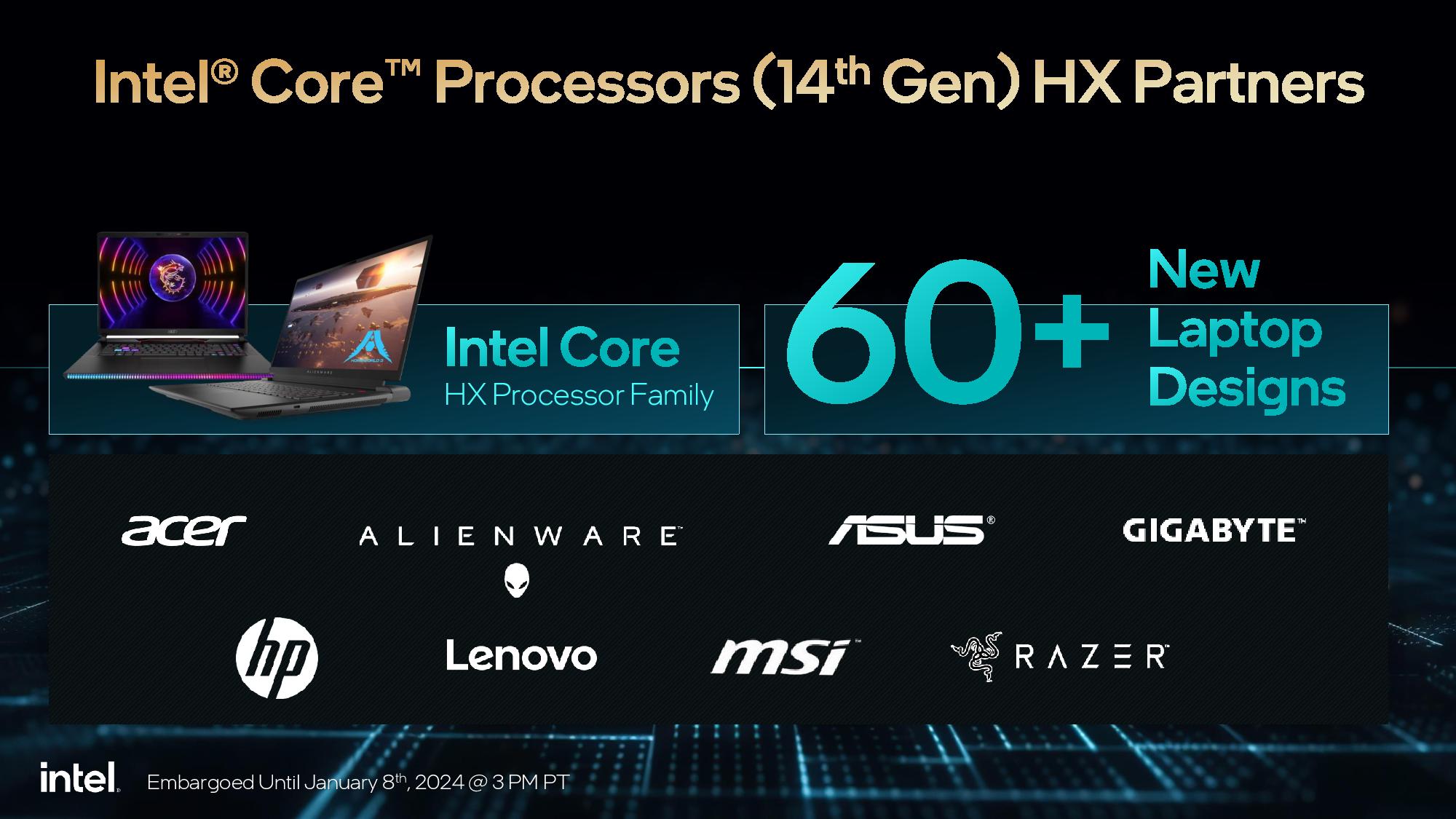

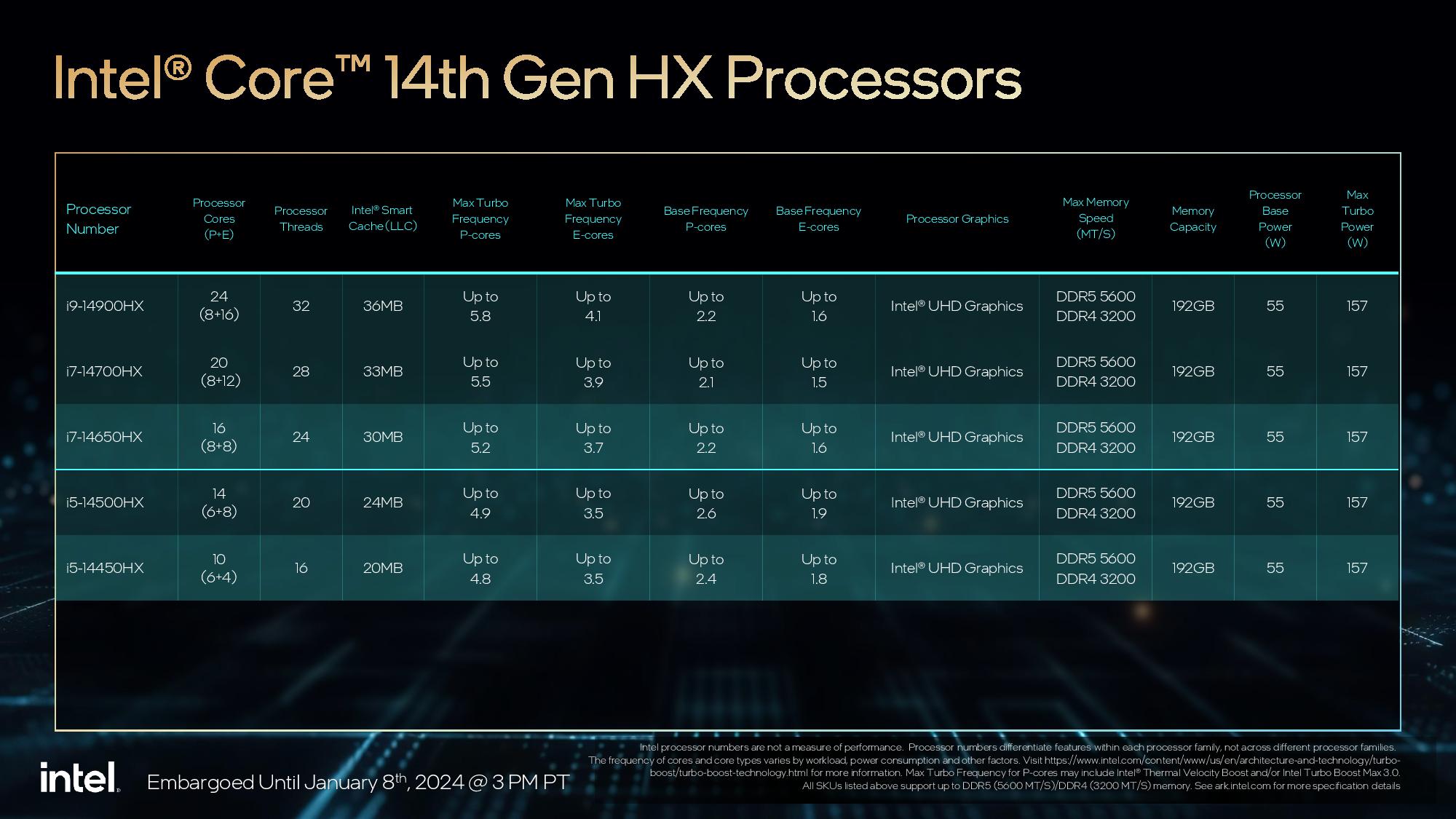
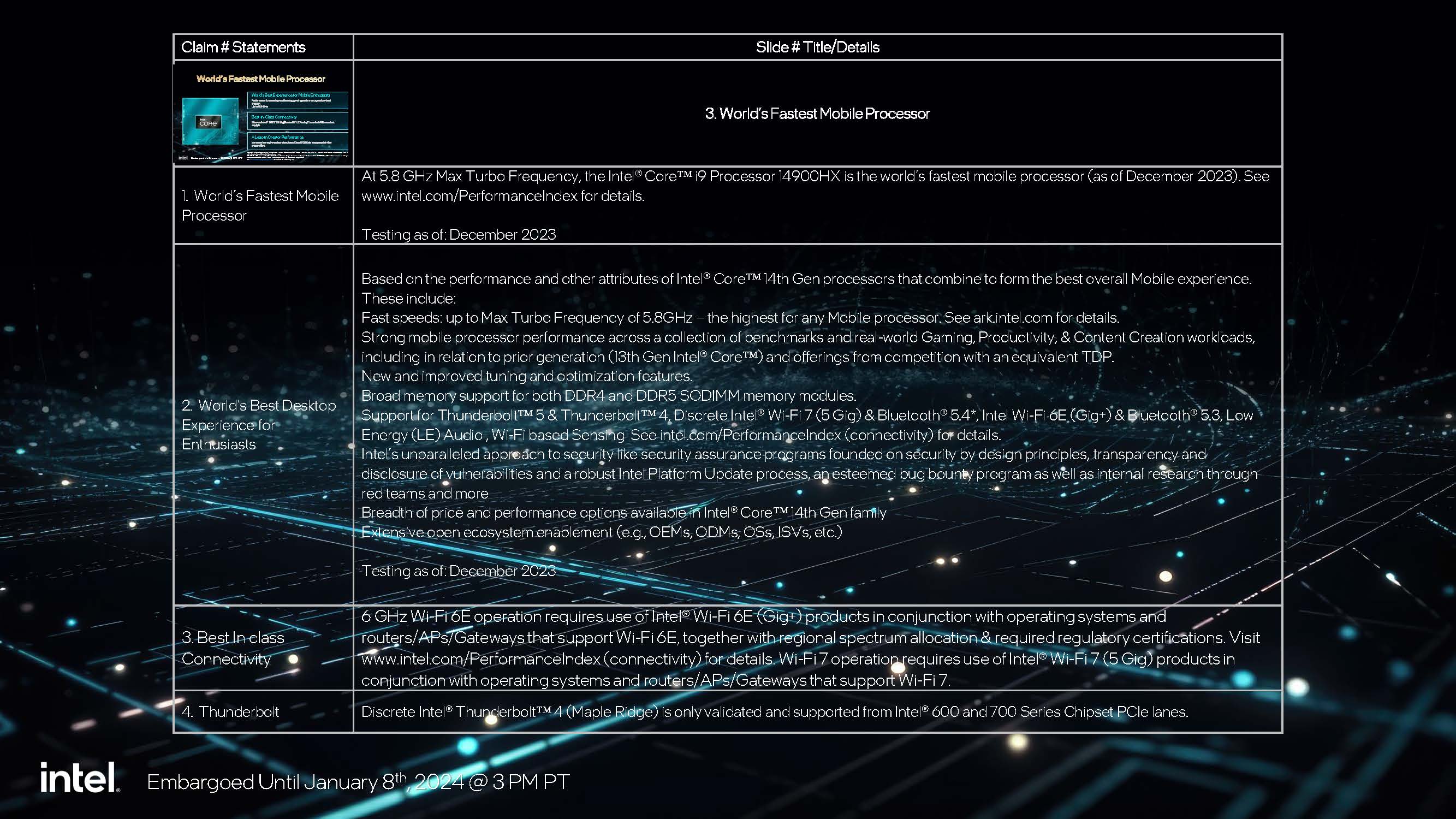
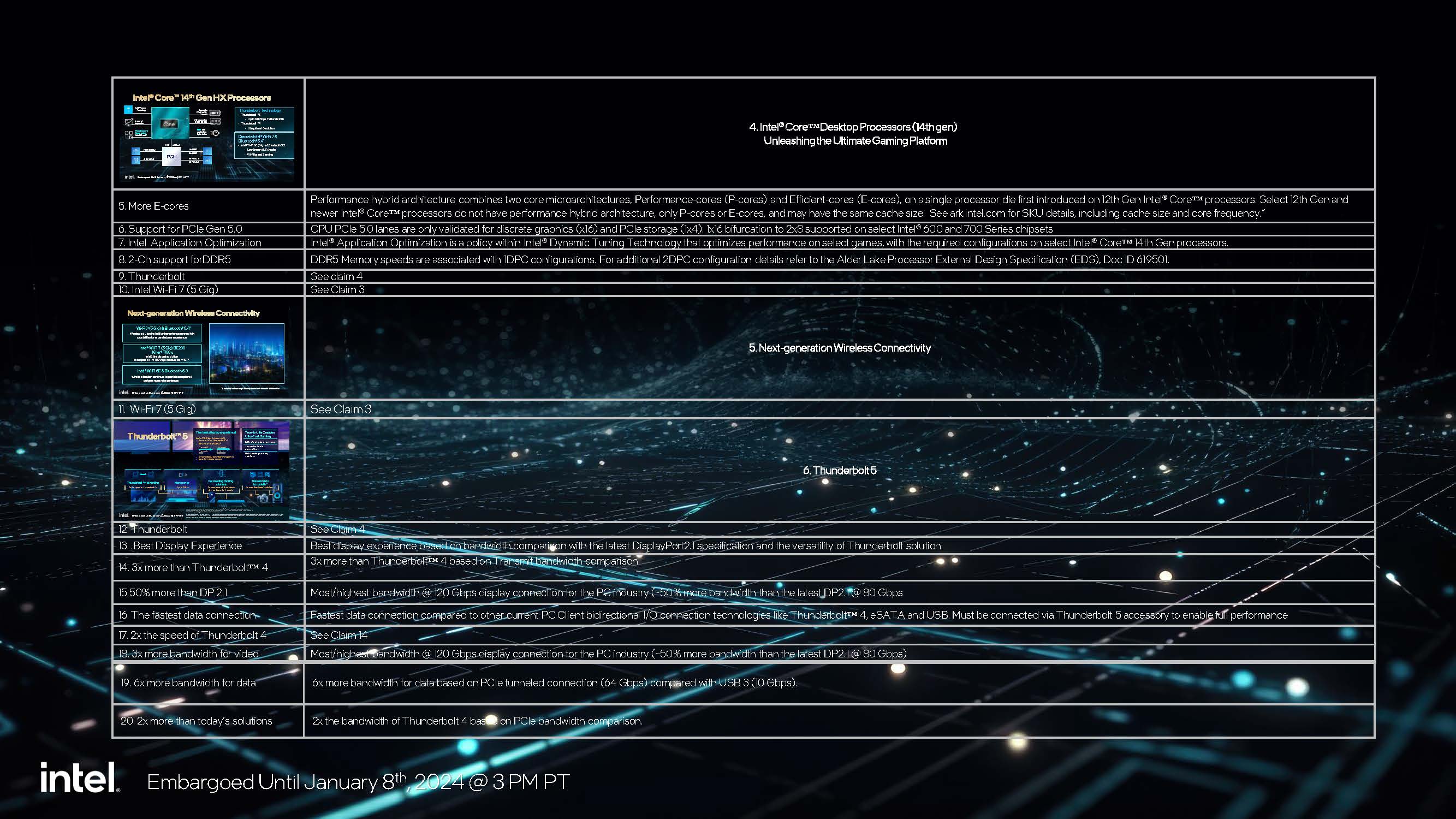
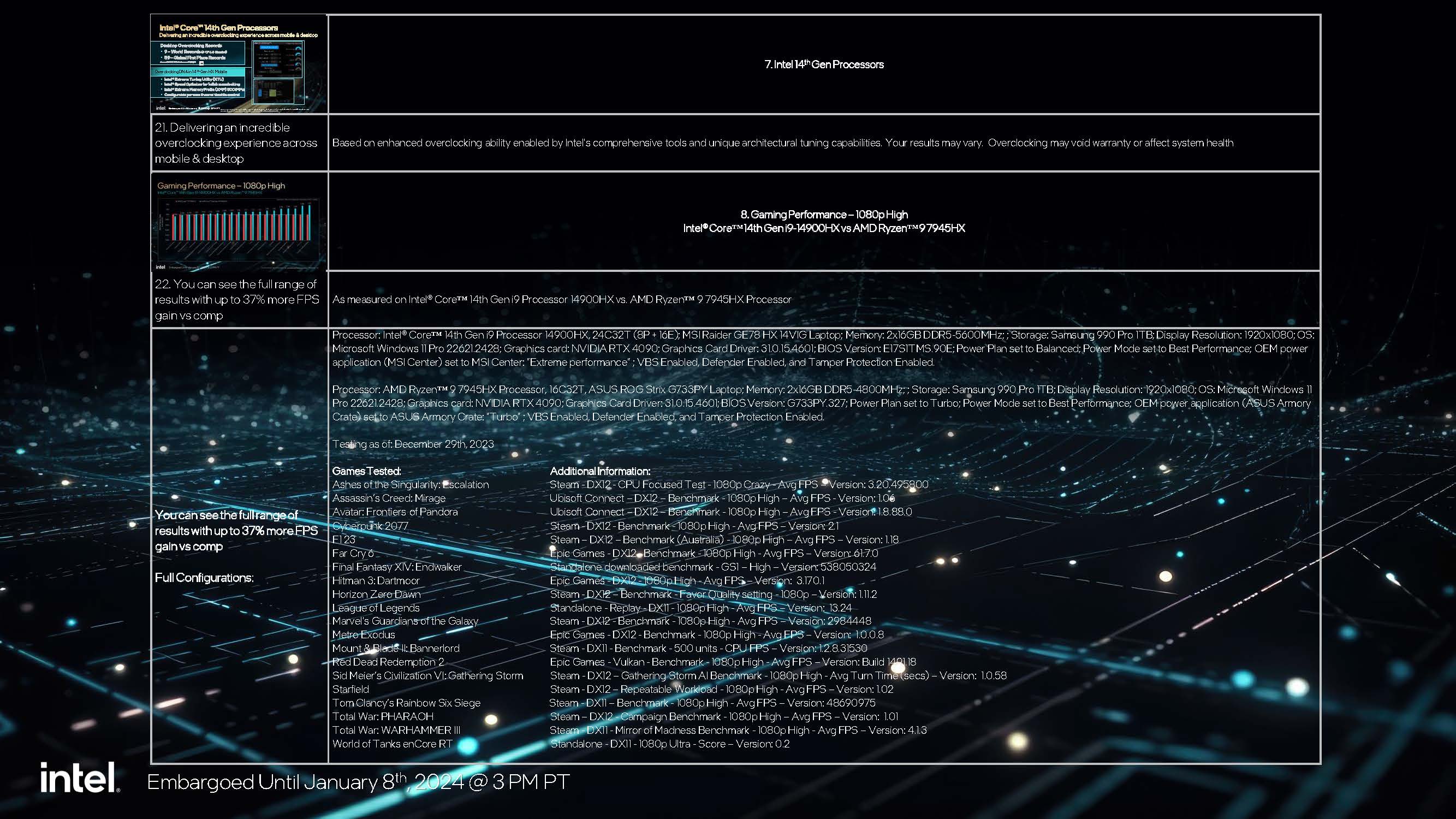

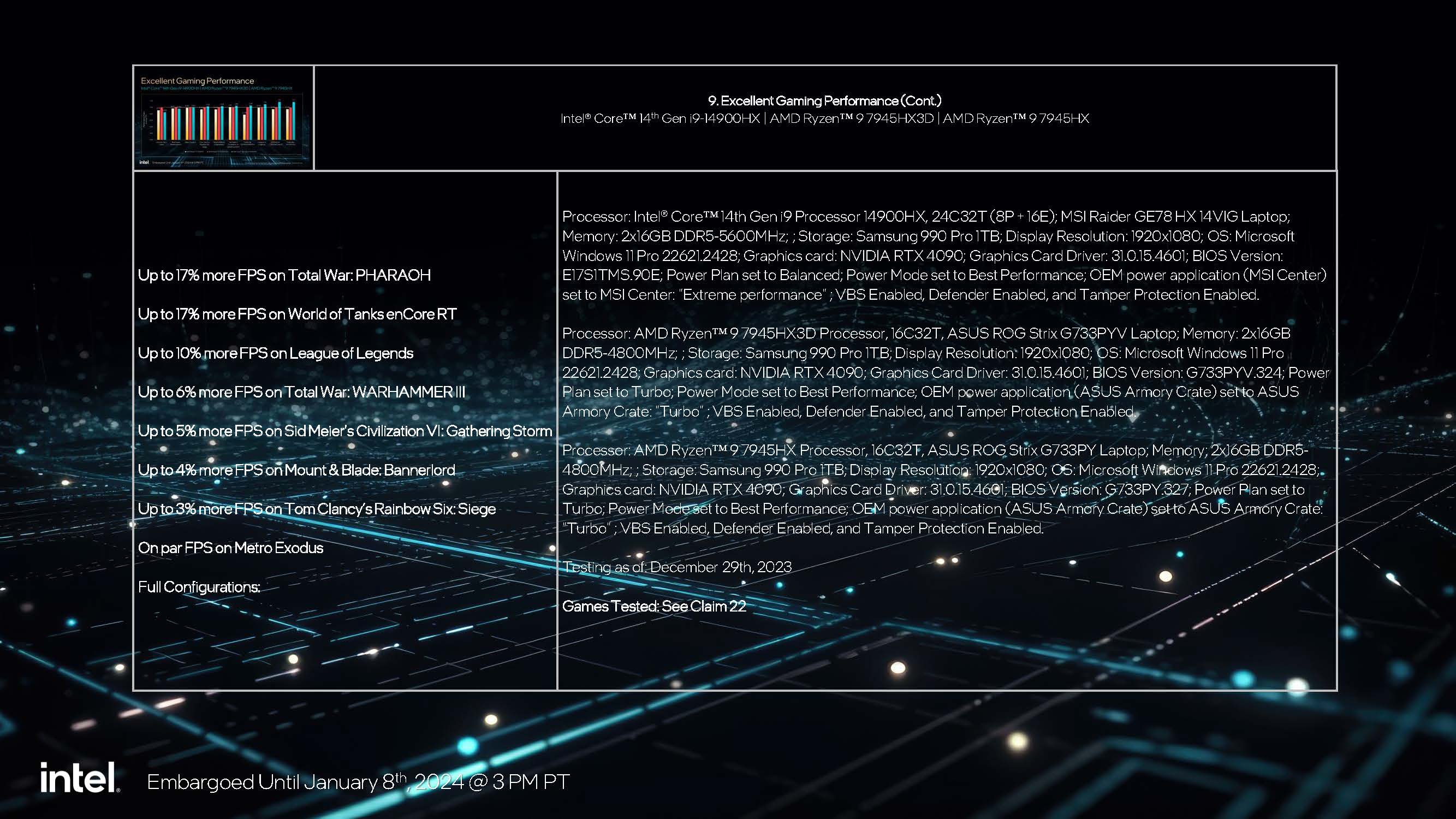
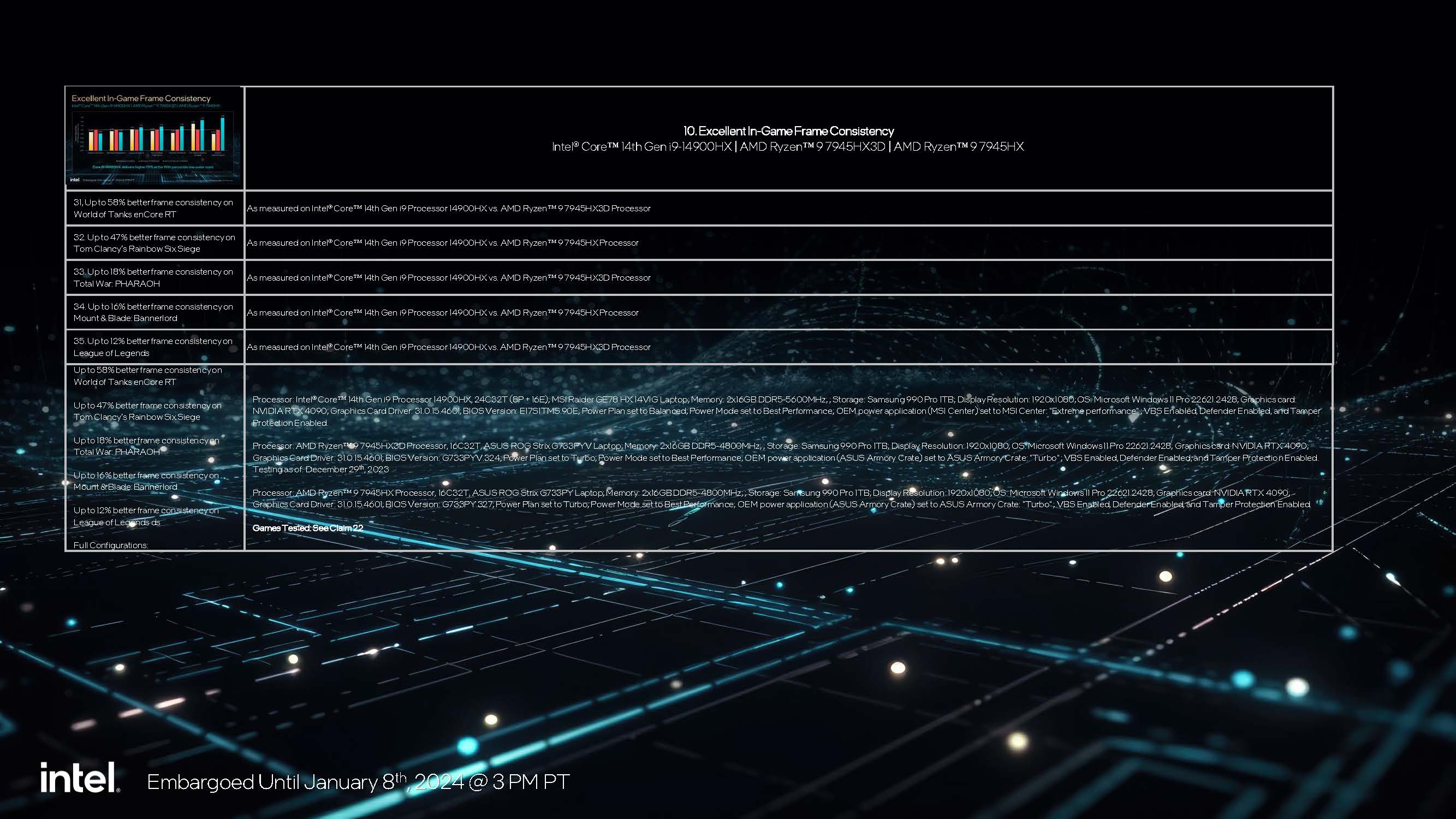
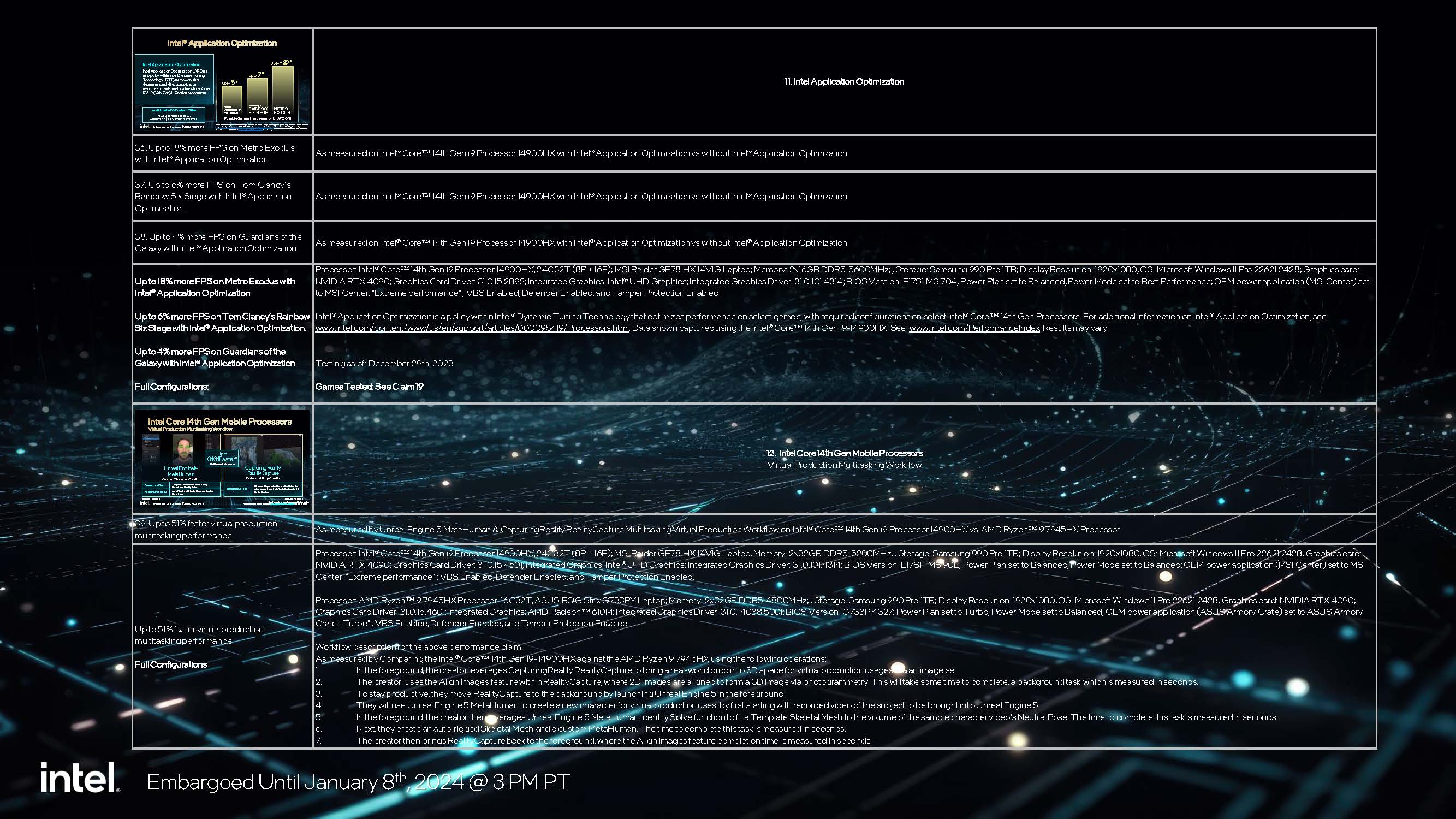
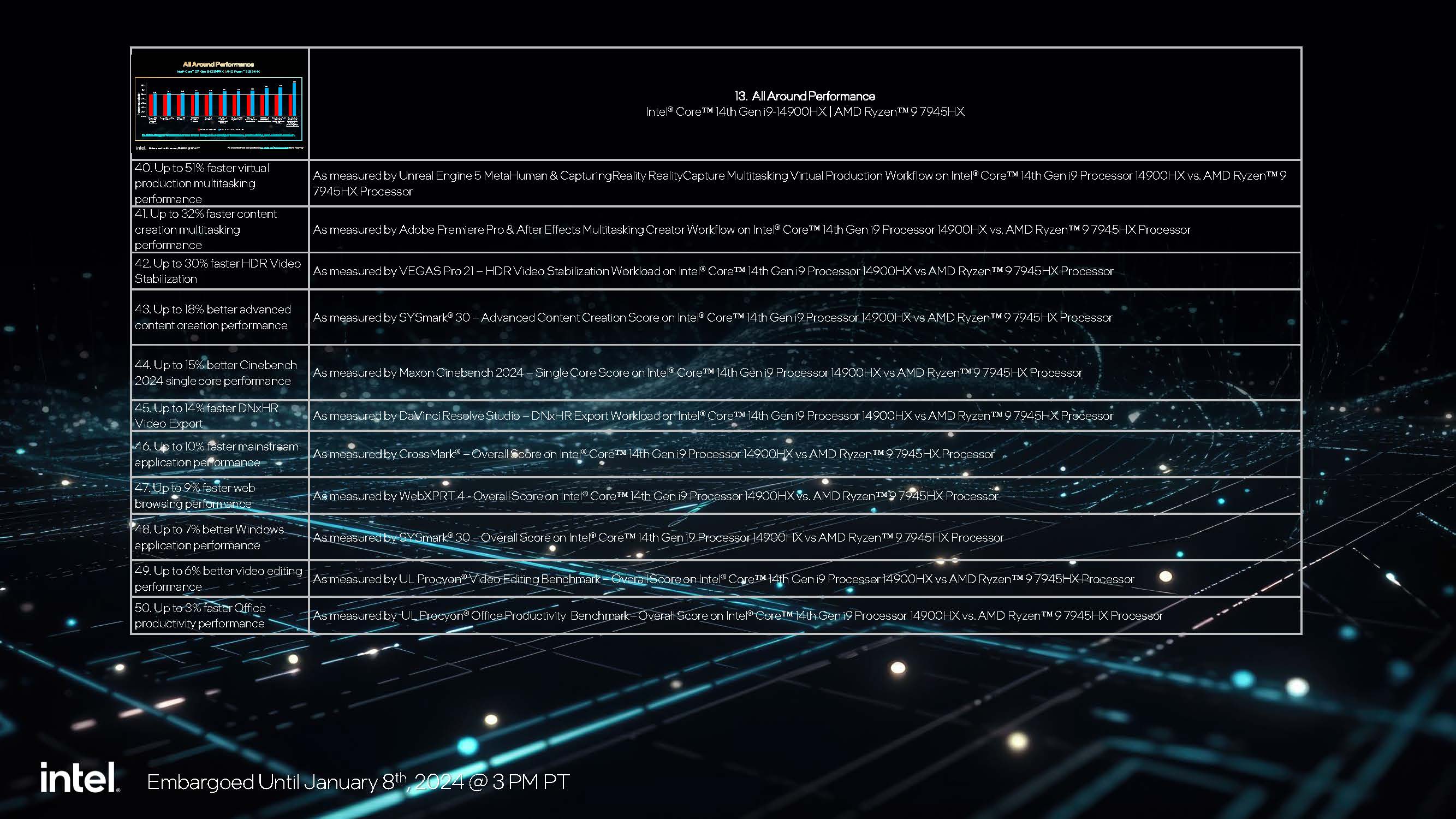

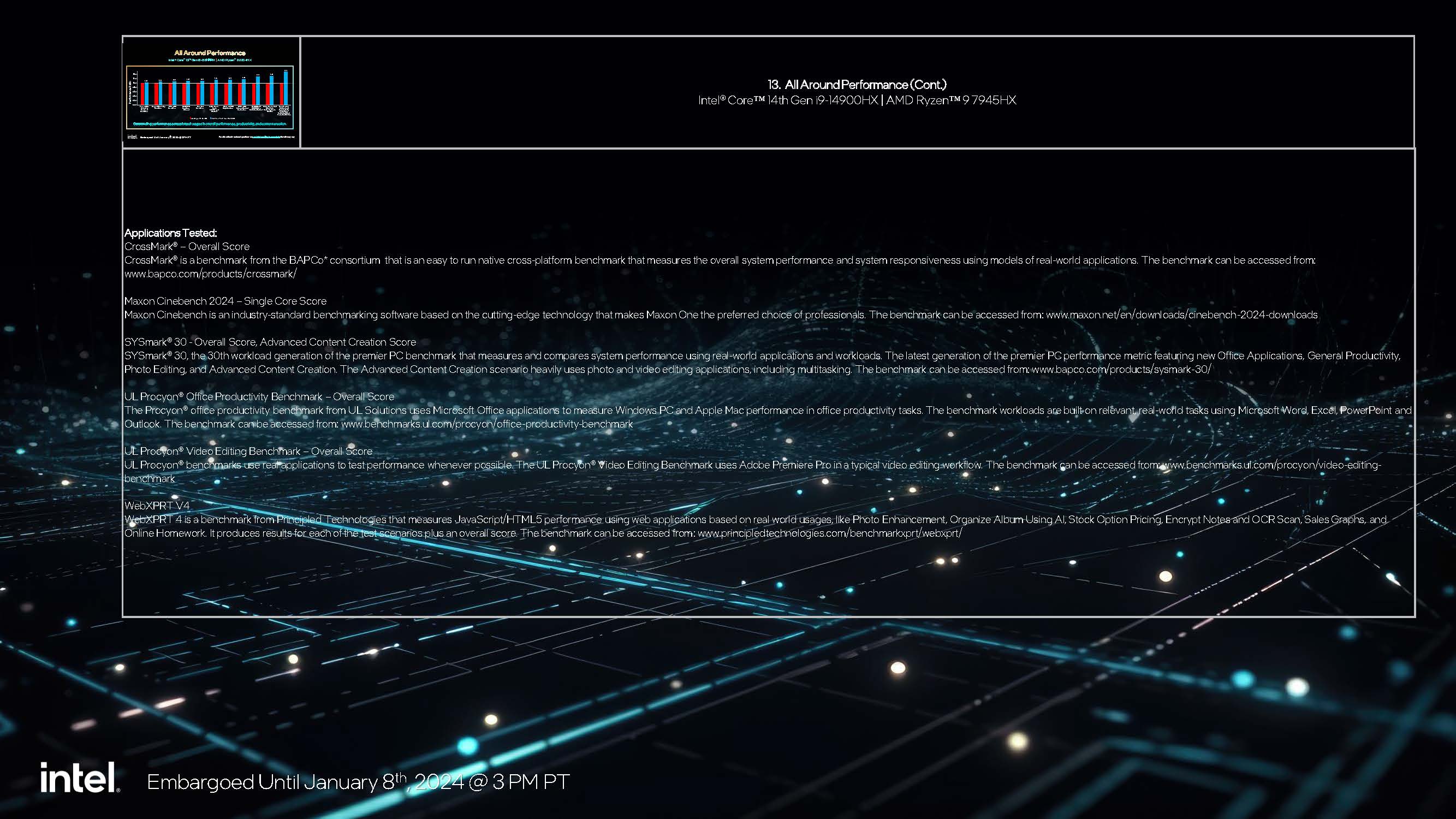
Intel shared some in-house benchmarks of the Core i9-14900HX beating AMD's Ryzen 9 7945HX and Ryzen 9 7945HX3D in 1080p gaming with high settings. As usual, we recommend a bit of caution when looking at vendor-provided benchmarks. Nonetheless, Intel claims that the Core i9-14900HX delivers 17% higher gaming performance than the Ryzen 9 7945HX3D. The chipmaker also shows a slide with the Core i9-14900HX offering up to a 51% faster multitasking performance when compared to the Ryzen 9 7945HX.
Get Tom's Hardware's best news and in-depth reviews, straight to your inbox.
The 14th Generation Raptor Lake Refresh HX-series chips can take advantage of Intel's APO (Application Optimization) technology to improve gaming performance. According to the chipmaker, APO can improve frame rates between 4% to over 18%, depending on the title. However, it's important to point out that APO only works on Core i9 and Core i7 processors and select games.
Feature-wise, the processors embrace the latest Wi-Fi 7 and Bluetooth 5.4 connectivity standards, Thunderbolt 5 on select models. The platform comes with Wi-Fi 6E support; therefore, it'll be up to the vendors to decide whether they want to implement Wi-Fi 7 through a discrete controller. There is no native Thunderbolt 5 support on the current platform but that's where Intel's Thunderbolt 5 controllers, such as Barlow Ridge come in. However, that will add to the cost of the device.
The 14th Generation Raptor Lake Refresh HX-series processors support a bunch of Intel technologies, including XTU (Extreme Tuning Utility), Speed Optimizer for one-click overclocking, and XMP (Extreme Memory Profile) SO-DIMMs. DDR5-5600 and DDR4-3200 memory support remains unchanged, while the maximum capacity supported is still 192GB of DDR5 memory.
According to Intel, we can expect over 60 new laptop designs from top brands, like Acer, Alienware, Asus, Gigabyte, HP, Lenovo, MSI and Razer, wielding the chipmaker's 14th Generation Raptor Lake Refresh HX-series processors this year.

Zhiye Liu is a news editor, memory reviewer, and SSD tester at Tom’s Hardware. Although he loves everything that’s hardware, he has a soft spot for CPUs, GPUs, and RAM.